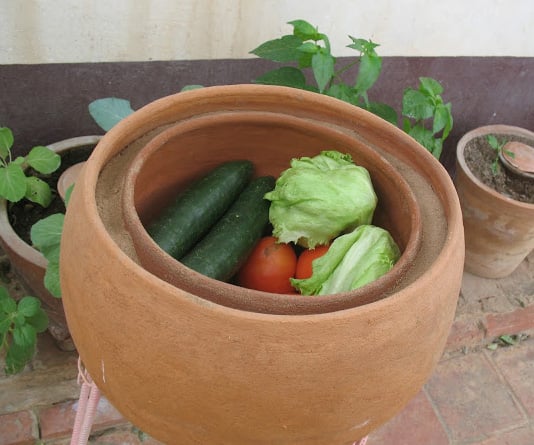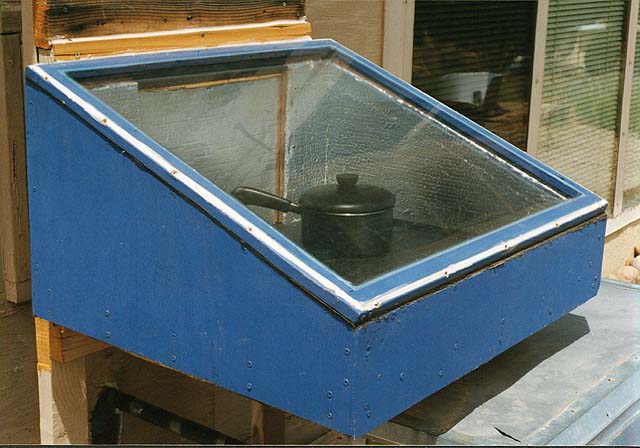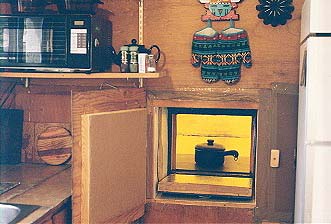
DH likes CHICKEN. This, only second after steak, is his go to for just about any meal. The creamy sauce makes the meal. Will print it out and surprise him this week or next. Have you eaten Candied Chicken? Really really good. It does have sugar in the sauce so diabetics beware.
https://www.tasteandtellblog.com/candied-chicken-recipe/
Serve it with rice (also a DH favorite) but one might try pasta as well (as seen in GENIUS KITCHEN -
http://www.geniuskitchen.com/recipe/candied-chicken-breasts-18544 )
https://www.tasteandtellblog.com/candied-chicken-recipe/
For simple recipes using no more than three ingredients try this one:
World’s Best Pasta Sauce from Julia Child at DELISH
https://www.delish.com/cooking/a20077904/best-3-ingredient-pasta-sauce/


Make your own Fridge (Zeer): It works using what's known as evaporative cooling. As the water evaporates due to the sun, the water takes heat from the inner pot and makes it cooler.
•To make your Zeer you need two clay pots. One needs to be able to fit into the other with a gap of about 2cm. Add a layer of sand to the bottom of the large pot. Place your smaller pot on top pf the sand. The tops of the two pots should be level. You may need to add or take away sand to get them flush
•Once that's done fill the sides right up to the top with sand. Now add water to the sand. Keep adding until it can't absorb any more
•Now add a damp cloth that covers only the small inner pot. It's important it doesn't cover the sand as this will stop the evaporation.
•Now just add foodstuff and place in the sun. You wll need to add water twice a day to prevent it from drying out and becoming hot rather than cold.
Two clay pots. One smaller than the other. Put sand (sand works better than dirt) nested between the two pots. Sand divider should be about 1” or so. Cover with lid or bottom drain saucer. Maybe put water in the bottom of pot (seal hole in bottom of flower pot. Set foodstuffs on top of a rack inside the pot but above the water. Cover with lid. Or cover with a wet towel. Sand needs to be watered twice a day or so to keep damp. Unglazed porous clay pots (needed for evaporative effect). If using sea water, inside of inner pot should be glazed.
It has been shown that increasing the radius of the outer pot from 10” to 18”, almost doubles the total cooling effect. The device is dependent solely on naturally occurring winds. To maximize air flow, it is recommended that Zeer refrigerator be placed as high above the ground as possible. This can be accomplished by building a simple frame to support the device, and placing them on high ground or on top of buildings.
A ZEER is constructed by placing a clay pot within a larger clay pot with wet sand in between the pots and a wet cloth on top. The device cools as the water evaporates, allowing food stored in the inner pot to be kept fresh for much longer in a hot, dry climate. It must be placed in a dry, ventilated space for the water to evaporate effectively towards the outside. Evaporative coolers tend to perform poorly or not at all in climates with high ambient humidity, since the water is not able to evaporate well under these conditions.
If there is an impermeable separation layer between the food and the porous pots, undrinkable water such as seawater can be used to drive the cooling process, without contaminating the food. This is useful in arid locations near the ocean where drinkable water is a limited commodity, and can be accomplished by using a pot that has waterproof glaze applied to the inner wall where the food is stored. Extended operation is possible if the pots are able to draw water from a storage container, such as an inverted airtight jar, or if the pots are placed in a shallow pool of water.
Food Unrefrigerated shelf life Shelf life with zeer
Carrots 4 days 20 days
Eggplant 1-2 days 21 days
Guava 2 days 20 days
Meat <1 day ~14 days
Okra 4 days 17 days
Greens 1 day 5 days
Tomatoes 2 days 20 days
In 2006 independently invented a similar device. The device can be made for commonly available material such as cardboard, sand and recycled metal. The device is composed of two cylinders. The inner metal cylinder is fitted inside the outer cylinder which can be made from whatever materials the manufacturer has access to, including wood or plastic. Space is left between the inner and outer chamber to be filled with organic material which can include sand, wool or soil that is then saturated with water. As heat from the sun evaporates the water, the inner chamber cools reducing and maintaining the temperature at 43 °F (6 °C). Cummins's device is used in areas of Africa where electricity is often not readily accessible to help preserve perishable foods such as meat and dairy products. It is not yet being used for vaccines.
Assembly and Operation:
Sand should be placed in the bottom of the large pot forming a layer of approximately 5cm in depth
Place the smaller pot on top of the sand and center it in the large pot (pots should now be level)
Fill the remaining space between the pots with sand
If possible place the assembled device on a stand to maximize air flow
The small pot should be covered with a lid (clay or cloth) to prevent hot air from entering the storage chamber
The pot-in-pot refrigerator operates passively as long as the sand remains moist
Check the sand twice a day and add water as needed.
Buried Clay Pot Irrigation:
The book Fan Sheng-chih Shu describes the use of buried clay pot irrigation in China more than 2,000 years ago (Sheng Han, 1974). Current practices remain much the same. Make 530 pits per hectare (210 pits per acre), each pit 70 cm (24 inches) across and 12 cm (5 inches) deep. To each pit add 18 kilograms (38 lbs) of manure. Mix the manure well with an equal amount of earth. Bury an earthen jar of 6 liters (1.5 gallons) capacity in the center of the pit. Let its mouth be level with the ground. Fill the jar with water. Plant 4 melon seeds around the jar. Cover the jar with a tile. Always fill jar to the brink if the water level falls. Buried clay pot irrigation uses a buried, unglazed clay pot filled with water to provide controlled irrigation to plants grown near it. A standard red clay pot with the hole plugged works fine. The seedling or seed should be placed in the area wetted by the pot. The water seeps out through the clay wall at a rate that is influenced by the plant's water use. This leads to very high efficiency--much better than drip irrigation and as much as ten times more efficient than conventional surface irrigation. Buried clay pot irrigation has been used to grow a wide range of annual and perennial plants in China, Pakistan, India, Iran, Mexico, and Brazil. In Mexico buried clay pot irrigation enabled two corn crops to be grown in a season with yield sufficient to feed a family from 400 square yards of garden. Buried clay pot irrigation is also useful for gardening, landscaping, and growing plants in containers -- on patios or porches, where the clay pot is buried in the planter box or a larger clay pot filled with soil. It is also excellent for rooting cuttings. Limiting water delivery to the area where the crop is grown dramatically reduces weed growth, a major constraint on production in many areas of the world. They also may be refilled every few days instead of requiring constant attention. In 1989 I grew Hopi corn using buried clay pots. The water use on a full field basis was 7.5 cm/ha [0.25 acre feet], one tenth the conventional water use for corn in California. The above ground plant yield per cubic meter of water was 6.3 kg, total plant yield was 12.6 kg per cu meter.
Irrigation System Efficiency - Productivity in kg plant per cubic meter of water:
wick >4
buried clay pot 2.5 to 6
porous capsule (no pressure) 2.5
deep pipe 2.4
porous capsule (pressure) 1.9
drip 1.4
sprinkler 0.9
closed furrow (basin) 0.7


I want this "through the wall solar oven" but don't want to cut a hole in the house. Maybe a kitchen window? Barbara Kerr has had good success with this over in third world countries.
http://solarcooking.org/bkerr/DoItYouself.htm
http://solarcooking.wikia.com/wiki/Solar_Wall_Oven